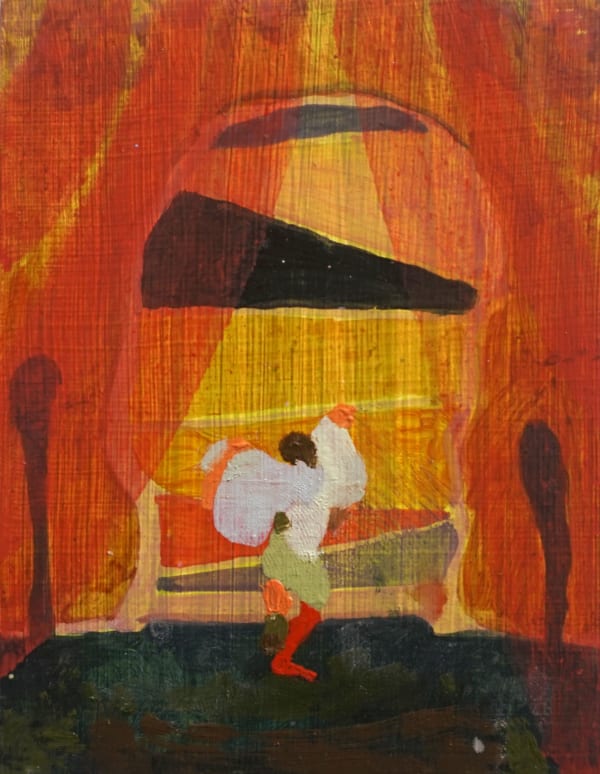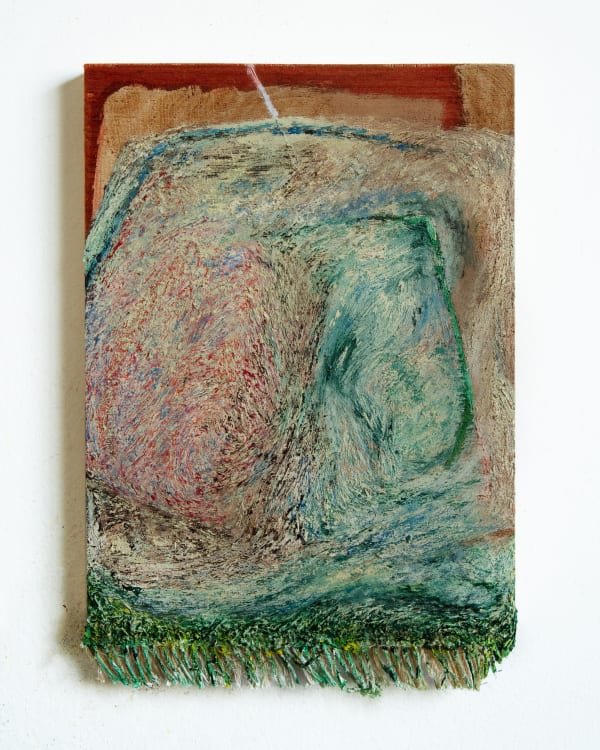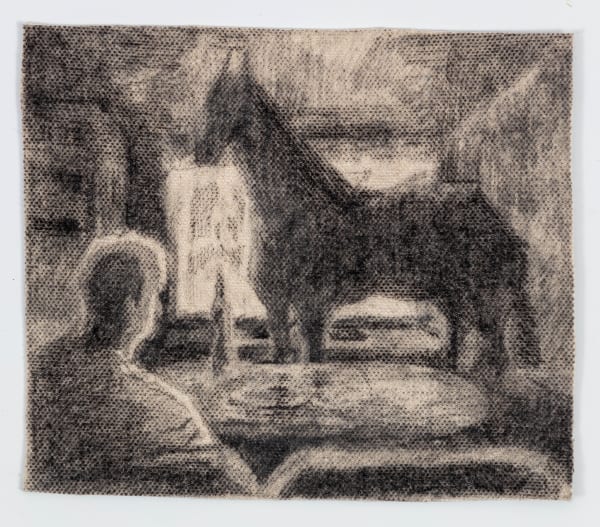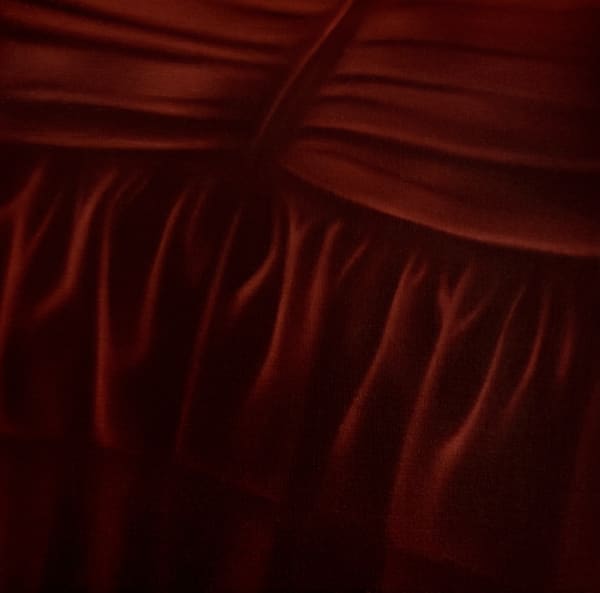-
Le Petit Salon
-

Kris Lamorena
I Miss You, 2022
-
"In 1667, a group of recent graduates from France’s prestigious École des Beaux-Arts were invited to exhibit in the Louvre Palace’s historic Salon Carré gallery space. The exhibition would quickly become a much-anticipated annual event, known mononymously as the Salon. A marker of emerging success and royal-stamped status amongst French painters and sculptors, the exhibitions were hosted by national institution of art patronage the Académie des Beaux-Arts and selected by a juried panel of illustrious artists and eminent invitees, after welcoming open submissions since the late 18th century. Government sponsorship was eventually withdrawn from the exhibition in 1881, following the rise of splinter Salons such as the now infamous Salon Des Refuses (‘Exhibition of Rejects’) which included artworks rejected from the main exhibition due to their then avante-garde style or subject matter. These alternative editions readily embraced the rise of movements such as Impressionism in the late 19th century and eventually overshadowed the original in popularity, considered by that time to be antiquated and out of touch with artistic sensibilities."
-

Tom Woolner
Bust II, 2022
-
"A homage to its Parisian predecessor, ‘Le Petit Salon’ focuses particularly on artworks made on a smaller scale, for which there is equal historical precedent as to their power and prominence. See, for example, 16th-century cabinets of curiosities, also known colloquially as wonder-rooms. These comprehensive collections of art and antiquities - which commonly included objects of geological or biological importance, archaeological finds and religious relics alongside preeminent works of art and literature - occupied small private rooms in palaces, castles and manors throughout Renaissance Europe, and served as the encyclopaedic precursors to many a modern museum collection. The prevalence and prestige of such cabinet rooms gave rise to a trend of corresponding cabinet paintings, artworks of smaller size that still typically depicted full figures, landscapes or large-scale scenes, their subject matter not limited by the diminution of the works themselves. In fact, due to the necessary precision and skill needed in their painting - perhaps best epitomised in examples by Raphael or Elsheimer - these artworks were equally as sought after and lauded as their larger counterparts."
-
"In keeping with the variety found in classical Renaissance wonder-rooms, The Tagli’s exhibition presents paintings both figurative and abstract; sculptures of aluminium, ceramic and sterling silver; reliefs in resin and concrete; drawings adjacent to photographs; and moving image artworks alongside monoprints. And just like their cabinet antecedents, the reduced size of each artwork by no means diminishes their ability to tackle large concepts. Luca Guarino’s drawings explore the ever-increasing impingement of the digital on our physical world; Chriss Mann’s photographs expose the finest of lines between reality and imagination; and Yique’s public interventions and their subsequent documentation offer much-needed criticism of systemic societal failings."
-
-

Tom Woolner
Bust II, 2022
-

Tom Woolner
Bust I, 2022
-

Chris Mann
Untitled (Dune dogs), 2021
-

Chris Mann
Untitled (Bedouin), 2021
-

Alexander Aitken
Foliage in fervor , 2024
-

Alexander Aitken
Found amongst frond , 2024
-

Katherine Allen
Unexpected connections, 2024
-

Francesca Van Haverbeke
Toot , 2023
-

Christie Lau
Set , 2023
-

Christie Lau
Nausea , 2023
-

Katerina Murysina
Once Maxim came home and got scared, 2023
-

Lucrezia Abatzoglu
In The Realm of Mirrors, Where Reflectons Play, A Silver Enchantment, Forever To Stay, 2023 183 gr Sterling Silver & Two blue Sapphires
-

Karolina Albricht
Seismic Corruption, 2022
-

Karolina Albricht
M for Machinations, 2023
-

Luca Guarino
The Guest , 2022
-

Corrie Wingate
Der Papierene (The Paper Man), 2023
-

Yique (HanZheng Wang)
Perhaps Love , 2023
-

Yique (HanZheng Wang)
Perhaps Love , 2023
-

Kris Lamorena
Things Unsaid , 2024
-

Kris Lamorena
I Miss You, 2022
-

Evie Mae Jacobs
Scarlet Nights, 2023
-

Lottie Stoddart
Body armour , 2022
-

Oliver Hoffmeister
Red Drapes , 2022
-

Oliver Hoffmeister
Puddle , 2022
-

Oliver Hoffmeister
Green eye, Black eye, 2023
-

Andreas Stylianou
STARSCREAM: FALLEN COMET, 2023
-

Henry Miller
Jockstrap , 2023
-

Polina Filippova
Small Things III, 2023
-

Polina Filippova
Small Things IV, 2023
-

Jon Ridge
Chromatic Nomadic , 2023
-

Jon Ridge
Unfathum, 2023
-
-

Chris Mann
Untitled (Bedouin), 2021
-
"...what all the artworks included in ‘Le Petit Salon’ have in common is their capacity for prolonged, personal engagement. Viewer and viewed meet each other on equal footing, the audience encouraged to lean in, inspect and interact with artworks that evoke attention precisely because of their shared scale, not in spite of it."
- Hector Campbell
Le Petit Salon
Past viewing_room









































